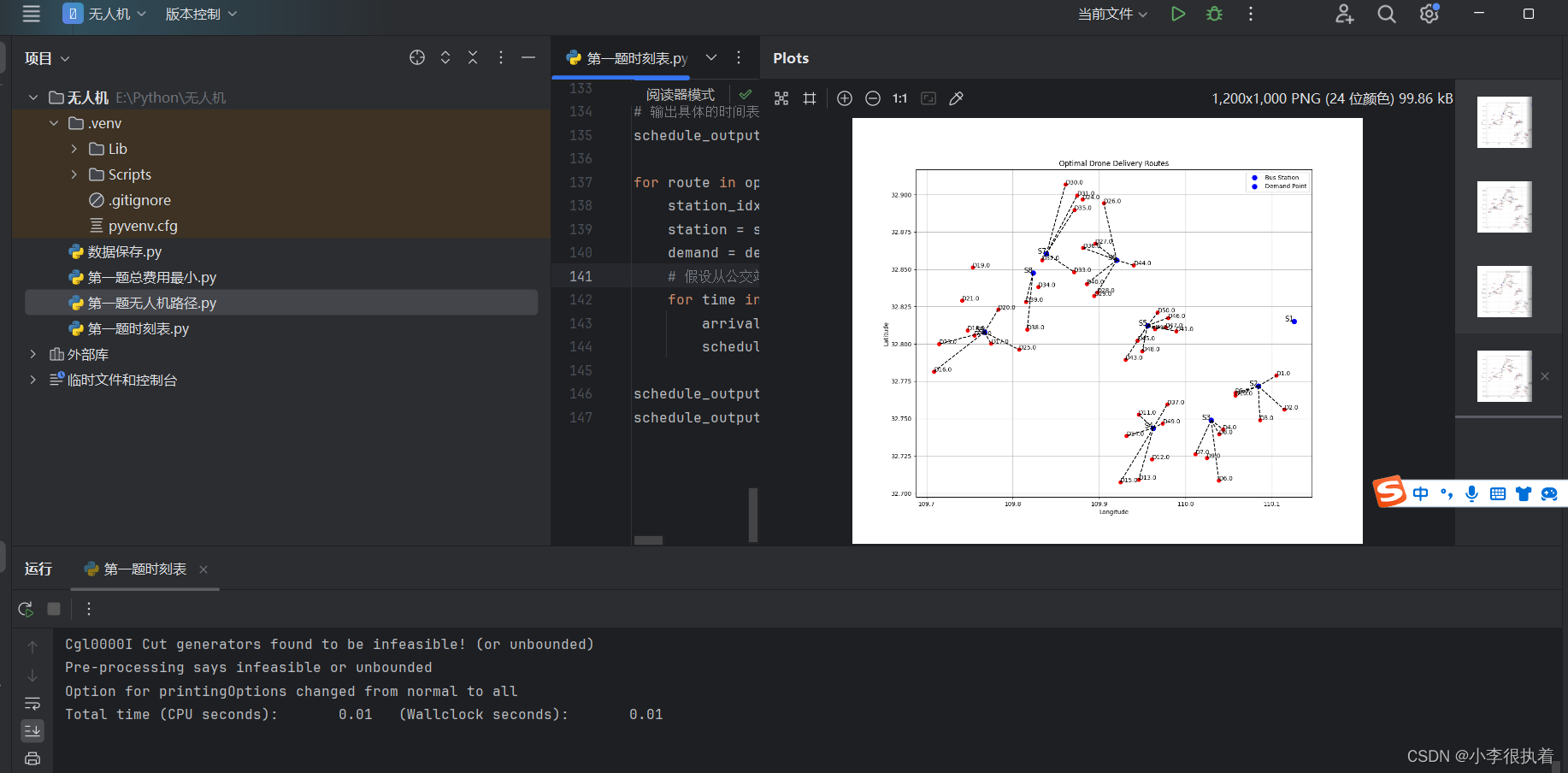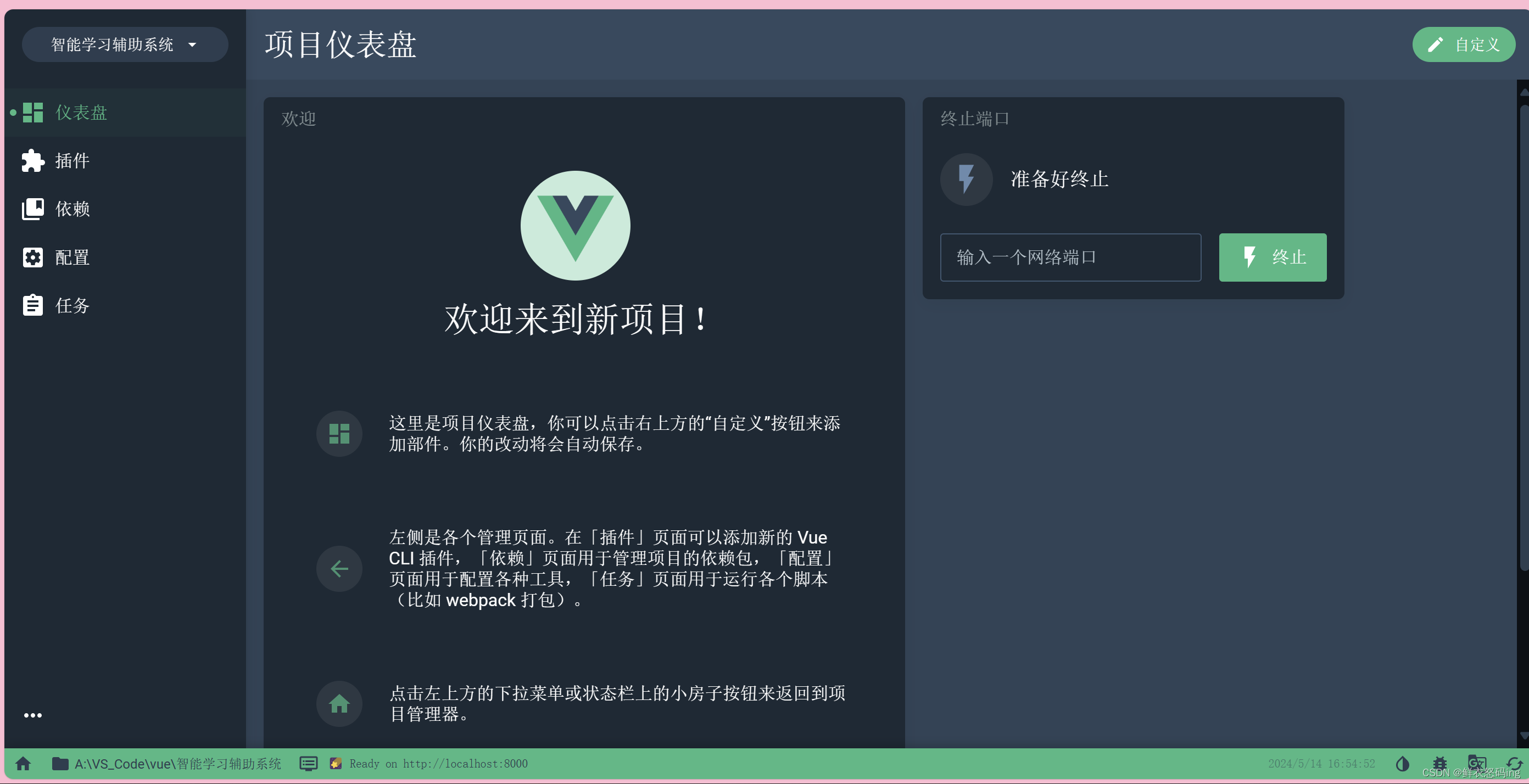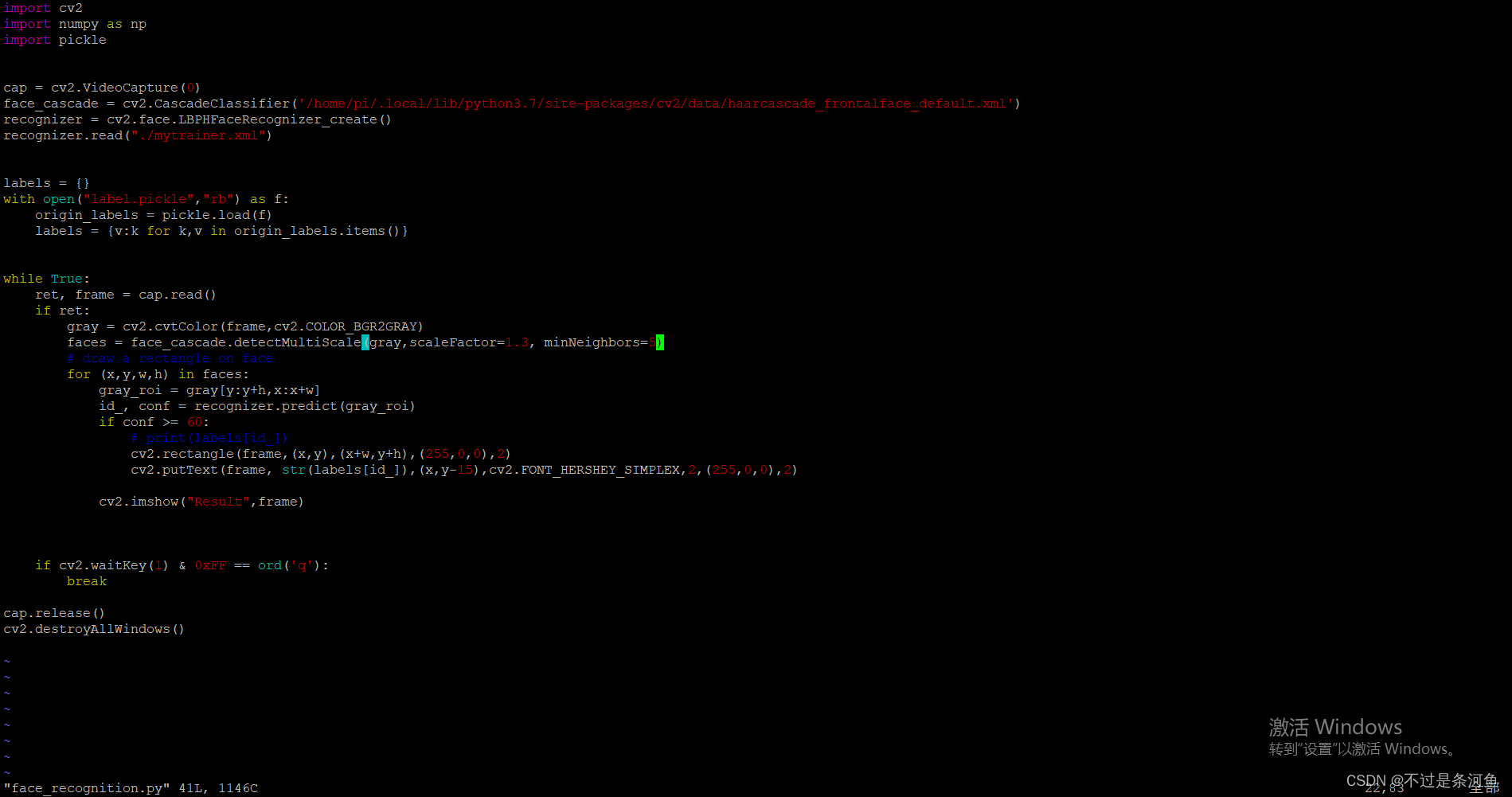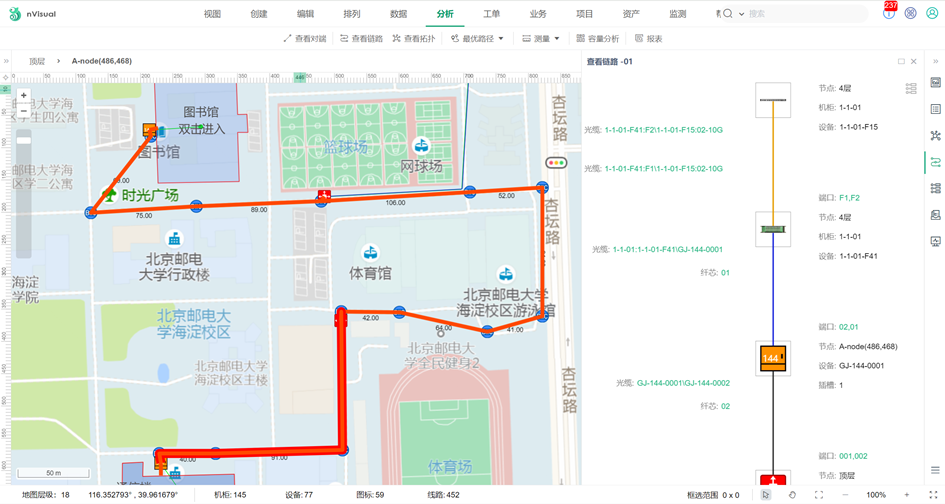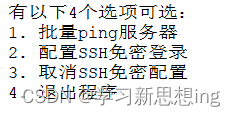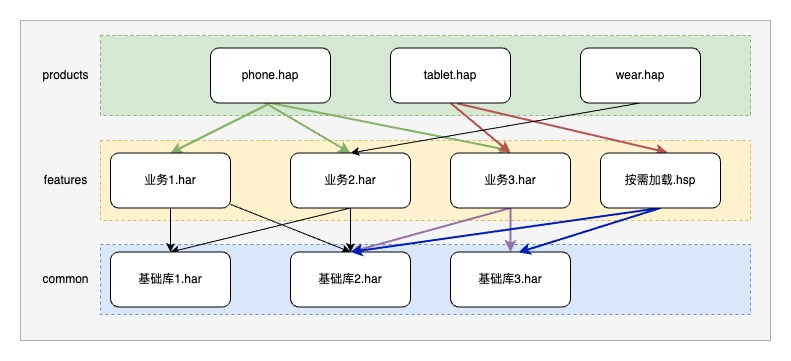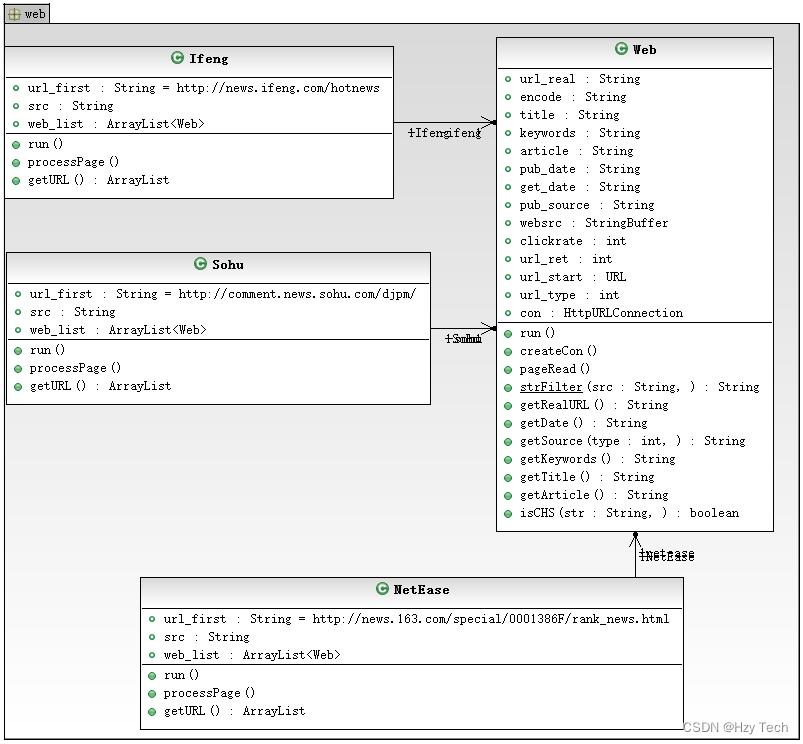学习源码可以看我的个人前端学习笔记 (github.com):qdxzw/frontlearningNotes
觉得有帮助的同学,可以点心心支持一下哈(笔记是根据b站上学习的尚硅谷的前端视频【张天禹老师】,记录一下学习笔记,用于自己复盘,有需要学习的可以去b站学习原版视频)
路由
一、对路由的理解

二、基本切换效果
- Vue3中要使用vue-router的最新版本,目前是4版本。
- 路由配置文件代码如下:
import { createRouter, createWebHistory } from "vue-router";
import Home from "../pages/Home.vue";
import News from "../pages/News.vue";
import About from "../pages/About.vue";
const router = createRouter({
history: createWebHistory(),
routes: [
{
path: "/home",
component: Home,
},
{
path: "/news",
component: News,
},
{
path: "/about",
component: About,
},
],
});
export default router;- main.ts代码如下:
// 引入createApp用于创建应用(买个盆)
import { createApp } from "vue";
import router from "./router/index";
// 引入App根组件(买个根)
import App from "./App.vue";
const app = createApp(App);
app.use(router);
app.mount("#app");- App.vue代码如下
<template>
<div class="app">
<h2 class="title">Vue路由测试</h2>
<!-- 导航区 -->
<div class="navigate">
<RouterLink to="/home" active-class="active"
><span>首页</span></RouterLink
>
<RouterLink to="/news" active-class="active"
><span>新闻</span></RouterLink
>
<RouterLink to="/about" active-class="active"
><span>关于</span></RouterLink
>
</div>
<!-- 展示区 -->
<div class="main-content">
<RouterView></RouterView>
</div>
</div>
</template>
<script lang="ts" setup name="App">
import { RouterLink, RouterView } from 'vue-router'
</script>
<style scoped>
.title {
text-align: center;
}
.navigate {
width: 500px;
text-align: center;
margin: 0 auto;
}
.navigate span {
display: inline-block;
margin-right: 50px;
width: 100px;
height: 50px;
line-height: 50px;
background-color: blanchedalmond;
text-decoration: none;
/* color: ; */
}
.main-content {
margin: 20px auto;
text-align: center;
width: 500px;
height: 200px;
border: 10px solid;
background-color: aqua;
}
.active {
color: salmon;
}
</style>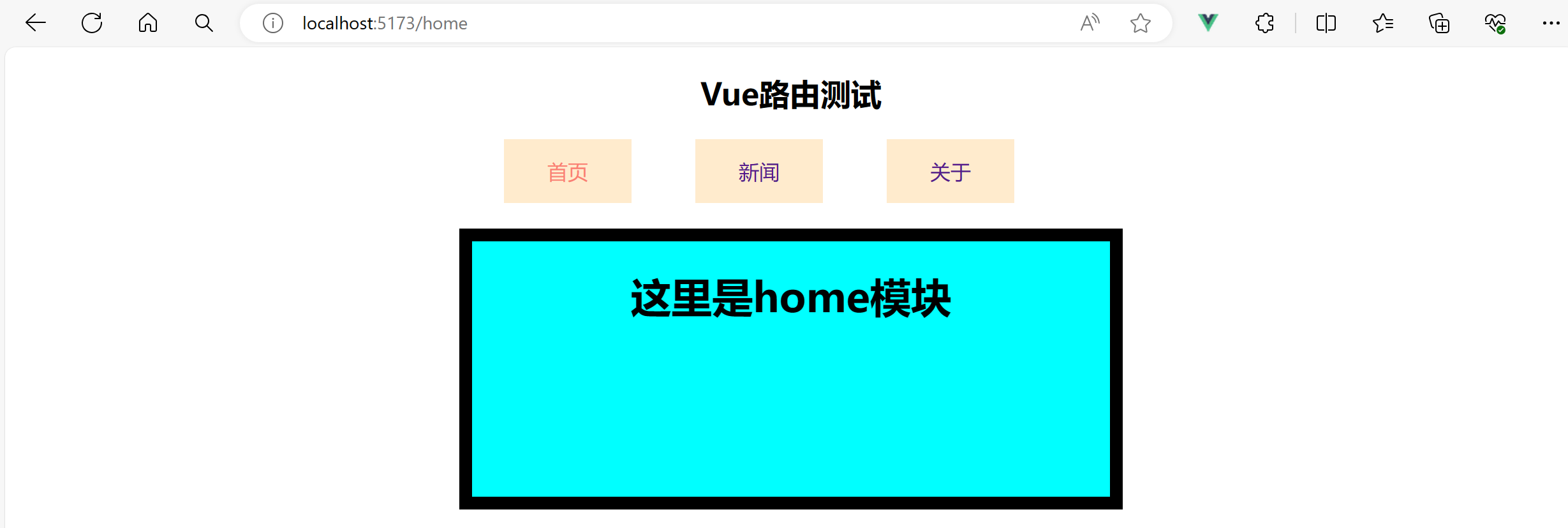
三、两个注意点
- 路由组件通常存放在pages 或 views文件夹,一般组件通常存放在components文件夹。
- 通过点击导航,视觉效果上“消失” 了的路由组件,默认是被卸载掉的,需要的时候再去挂载。
四、路由器工作模式
- history模式优点:URL更加美观,不带有#,更接近传统的网站URL。缺点:后期项目上线,需要服务端配合处理路径问题,否则刷新会有404错误。
const router = createRouter({
history:createWebHistory(), //history模式
/******/
})- hash模式优点:兼容性更好,因为不需要服务器端处理路径。缺点:URL带有#不太美观,且在SEO优化方面相对较差。
const router = createRouter({
history:createWebHashHistory(), //hash模式
/******/
})五、to的两种写法
字符串、对象
<!-- 第一种:to的字符串写法 -->
<router-link active-class="active" to="/home">主页</router-link>
<!-- 第二种:to的对象写法 -->
<router-link active-class="active" :to="{path:'/home'}">Home</router-link>六、命名路由
作用:可以简化路由跳转及传参(后面就讲)。
给路由规则命名:
routes:[
{
name:'zhuye',
path:'/home',
component:Home
},
{
name:'xinwen',
path:'/news',
component:News,
},
{
name:'guanyu',
path:'/about',
component:About
}
]跳转路由:
<!--简化前:需要写完整的路径(to的字符串写法) -->
<router-link to="/news/detail">跳转</router-link>
<!--简化后:直接通过名字跳转(to的对象写法配合name属性) -->
<router-link :to="{name:'guanyu'}">跳转</router-link>七、嵌套路由
- 编写News的子路由:Detail.vue
- 配置路由规则,使用children配置项:
const router = createRouter({
history:createWebHistory(),
routes:[
{
name:'zhuye',
path:'/home',
component:Home
},
{
name:'xinwen',
path:'/news',
component:News,
children:[
{
name:'xiang',
path:'detail',
component:Detail
}
]
},
{
name:'guanyu',
path:'/about',
component:About
}
]
})
export default router- 跳转路由(记得要加完整路径):
<router-link to="/news/detail">xxxx</router-link>
<!-- 或 -->
<router-link :to="{path:'/news/detail'}">xxxx</router-link>- 记得去News组件中预留一个<router-view>
<template>
<div class="news">
<!-- 导航区 -->
<ul>
<li v-for="news in newsList" :key="news.id">
<RouterLink to="/news/detail">{{ news.title }}</RouterLink>
</li>
</ul>
<div class="news-detail">
<RouterView />
</div>
</div>
</template>
<script lang="ts" setup name="News">
import { reactive } from 'vue'
import { RouterLink, RouterView } from 'vue-router'
let newsList = reactive([
{ id: 'dawd1', title: '1', content: '11' },
{ id: 'dawd2', title: '2', content: '22' },
{ id: 'dawd3', title: '3', content: '33' }
])
</script>八、路由传参
query参数
- 传递参数(query参数可以用path和name)
<!-- 跳转并携带query参数(to的字符串写法) -->
<router-link to="/news/detail?a=1&b=2&content=欢迎你">
跳转
</router-link>
<!-- 跳转并携带query参数(to的对象写法) -->
<RouterLink
:to="{
//name:'xiang', //用name也可以跳转
path:'/news/detail',
query:{
id:news.id,
title:news.title,
content:news.content
}
}"
>
{{news.title}}
</RouterLink>- 接收参数:
import {useRoute} from 'vue-router'
const route = useRoute()
// 打印query参数
console.log(route.query)params参数
路由配置(如果传递的参数不是必须的,在后面加个?):
{
name: "xinwen",
path: "/news",
component: News,
children: [
{
name: "xiang",
path: "detail/:id/:title/:content",
component: Detail,
},
],
},- 传递参数(params参数只能用name)
<!-- 跳转并携带params参数(to的字符串写法) -->
<RouterLink :to="`/news/detail/001/新闻001/内容001`">{{news.title}}</RouterLink>
<!-- 跳转并携带params参数(to的对象写法) -->
<RouterLink
:to="{
name:'xiang', //用name跳转
params:{
id:news.id,
title:news.title,
content:news.title
}
}"
>
{{news.title}}
</RouterLink>- 接收参数:
import {useRoute} from 'vue-router'
const route = useRoute()
// 打印params参数
console.log(route.params)备注1:传递params参数时,若使用to的对象写法,必须使用name配置项,不能用path。
备注2:传递params参数时,需要提前在规则中占位。
九、路由的props配置
作用:让路由组件更方便的收到参数(可以将路由参数作为props传给组件)
{
name: "xiang",
path: "detail/:id/:title/:content",
component: Detail,
// 第一种(传递值给路由组件):props的对象写法,作用:把对象中的每一组key-value作为props传给Detail组件
// props:{a:1,b:2,c:3},
// 第二种(只适用于props):props的布尔值写法,作用:把收到了每一组params参数,作为props传给Detail组件
// props:true
// 第三种(适用于props、query):props的函数写法,作用:把返回的对象中每一组key-value作为props传给Detail组件
props(route) {
return route.query;
},
},使用defineProps进行接收
<template>
<ul>
<li>编号:{{ id }}</li>
<li>标题:{{ title }}</li>
<li>内容:{{ content }}</li>
</ul>
</template>
<script lang="ts" setup name="Detail">
defineProps(['id', 'title', 'content'])
</script>十、 replace属性
- 作用:控制路由跳转时操作浏览器历史记录的模式。
- 浏览器的历史记录有两种写入方式:分别为push和replace:
-
- push是追加历史记录(默认值)。
- replace是替换当前记录。
- 开启replace模式:<RouterLink replace .......>News</RouterLink>
十一、编程式导航
路由组件的两个重要的属性:$route和$router变成了两个hooks
<template>
<div class="news">
<!-- 导航区 -->
<ul>
<li v-for="news in newsList" :key="news.id">
<!-- <RouterLink to="/news/detail">{{ news.title }}</RouterLink> -->
<!-- 跳转并携带params参数(to的字符串写法) -->
<!-- <RouterLink :to="`/news/detail/001/新闻001/内容001`">{{
news.title
}}</RouterLink> -->
<!-- 跳转并携带params参数(to的对象写法) -->
<button @click="showNewsDetail(news)">点击查看新闻</button>
<RouterLink
:to="{
name: 'xiang', //用name跳转
params: {
id: news.id,
title: news.title,
content: news.title
}
}"
>
{{ news.title }}
</RouterLink>
</li>
</ul>
<div class="news-detail">
<RouterView />
</div>
</div>
</template>
<script lang="ts" setup name="News">
import { reactive } from 'vue'
import { RouterLink, RouterView, useRouter } from 'vue-router'
let newsList = reactive([
{ id: 'dawd1', title: '1', content: '11' },
{ id: 'dawd2', title: '2', content: '22' },
{ id: 'dawd3', title: '3', content: '33' }
])
const router = useRouter()
interface NewsInter {
id: string
title: string
content: string
}
function showNewsDetail(news: NewsInter) {
router.replace({
name: 'xiang', //用name跳转
params: {
id: news.id,
title: news.title,
content: news.title
}
})
}
</script>十二、重定向
- 作用:将特定的路径,重新定向到已有路由。
- 具体编码:
{
path:'/',
redirect:'/about'
}


